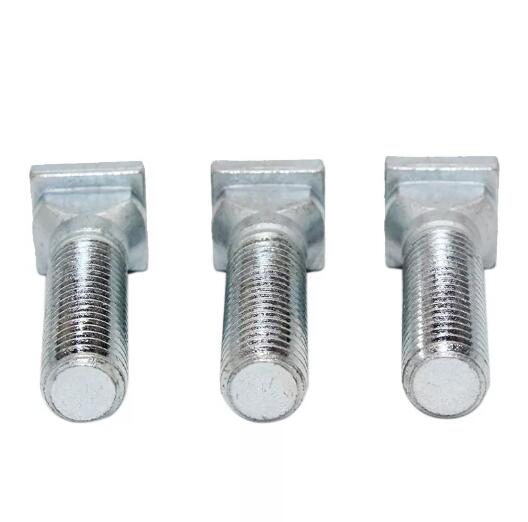Forging Durability: The Intricate Manufacturing Process of Stainless Steel T Bolts
2023-12-18
Introduction:
In the world of fasteners, stainless steel T bolts stand as stalwart components known for their resilience and strength. Behind their remarkable performance lies a meticulous manufacturing process that sets them apart from other types of bolts. In this blog, we'll unravel the intricacies of the manufacturing process of stainless steel T bolts and explore how it differs from the production of other bolts.
1. Material Selection:
The manufacturing journey of stainless steel T bolts commences with careful material selection. Stainless steel, an alloy of iron, chromium, and other elements, is chosen for its corrosion resistance and durability. The specific grade of stainless steel can vary based on the intended application.
2. Raw Material Inspection:
Quality control is paramount in the manufacturing process. Raw materials undergo rigorous inspection to ensure they meet the required standards and specifications. This step is crucial for guaranteeing the overall performance and reliability of the finished T bolts.
3. Hot Forging:
One of the distinctive features of stainless steel T bolt manufacturing is the hot forging process. In hot forging, the raw material is heated to high temperatures and then shaped using compressive force. This process enhances the material's grain structure, resulting in improved strength and durability. The T shape is formed during this stage, giving the bolt its characteristic profile.
4. Machining and Threading:
After forging, the T bolts undergo precision machining to achieve the desired dimensions and smooth surfaces. Threading, a critical step, is carefully executed to ensure proper engagement with nuts or other threaded components. This precision is vital for the bolts' functionality and ease of use.
5. Heat Treatment:
To further enhance the mechanical properties of the T bolts, heat treatment is often employed. This process involves subjecting the bolts to specific temperature and time conditions, optimizing their hardness, toughness, and overall performance.
6. Passivation:
Stainless steel T bolts undergo passivation, a chemical process that removes free iron from the surface, promoting the formation of a protective oxide layer. This layer contributes significantly to the bolts' corrosion resistance, making them suitable for a wide range of environments.
7. Quality Control and Testing:
Throughout the manufacturing process, quality control measures are implemented to ensure that each stainless steel T bolt meets the required specifications. Testing may include dimensional checks, tensile strength assessments, and corrosion resistance evaluations.
8. Surface Finish and Coating:
Depending on the application, stainless steel T bolts may undergo surface finishing processes or receive coatings to further enhance their performance, appearance, or resistance to specific environmental conditions.
Conclusion:
The manufacturing process of stainless steel T bolts is a symphony of precision and durability. From the careful selection of materials to the intricate steps of hot forging, machining, and passivation, each stage contributes to the creation of fasteners that can withstand the test of time. As we delve into the world of bolts, understanding the unique manufacturing process of stainless steel T bolts sheds light on the craftsmanship behind these essential components, emphasizing their role as reliable and resilient fastening solutions.



